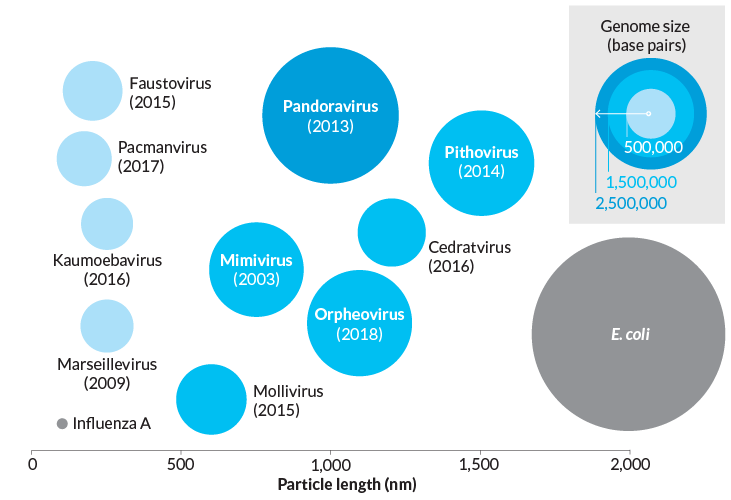Meet the giants among viruses
The list of these mega-sized entities continues to grow

SUPERSIZE ME The more scientists look, the more giant viruses pop up. The viral behemoths, which largely infect amoebas, may be common worldwide.
Clockwise from top left: P. Colson; J. Andreani et al/J. of Virology 2017; © IGS CNRS, Aix-Marseille Univ.; Chantal Abergel and Jean-Michel Claverie







